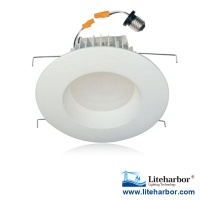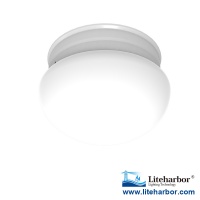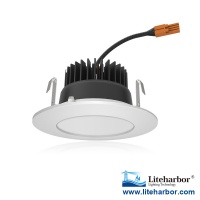Designing Your Under-cabinet Lighting
Here are a few issues to consider when designing your under-cabinet lighting:
Countertops
Countertops with a matte finish will produce a smoother lighting effect than those that are glossy, greatly reducing reflections. Light-colored surfaces will have a higher reflectance, resulting in a brighter appearance, than dark-colored surfaces.
For glossy surfaces, reflections can be minimized by using a fixture that includes a lens over the light source, rather than having a bare bulb. Dark-colored counters and backsplashes may require fixtures that produce more lumens.
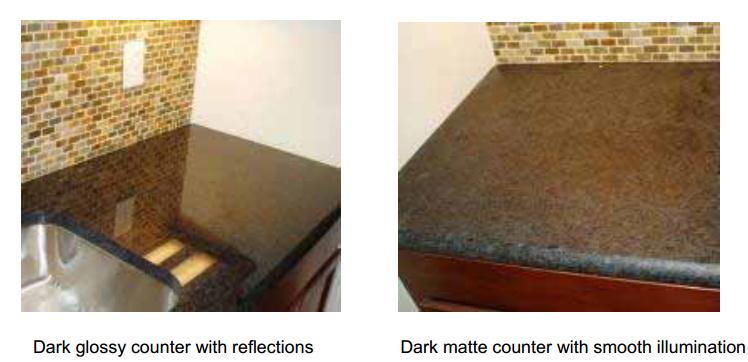
Lighting Color
Since people are working at the counter, colors and textures of foods and surfaces need to be well enhanced. The appropriate correlated color temperature (CCT), or color appearance, depends on the décor and personal preference. For wood tones, warm-colored tiles, copper-toned metal backsplashes or warmtoned walls, warm CCTs in the 2700 to 3500 kelvin (K) range are appropriate. For decorative glass tiles, glass shelves, cool-toned tiles or gray-toned metal colors, cool CCTs in the 3500 to 5000 K range are appropriate. Some manufacturers also label their product packaging with the CCT. If the products are not labeled, look for in-store displays where you can see the color of the lighting first-hand.
When trying to match lamps for the same color, it is best to choose lamps from the same manufacturer. Because CCT is not the primary determinant of a lamp’s color, two lamps with the same CCT will not necessarily be the same color.
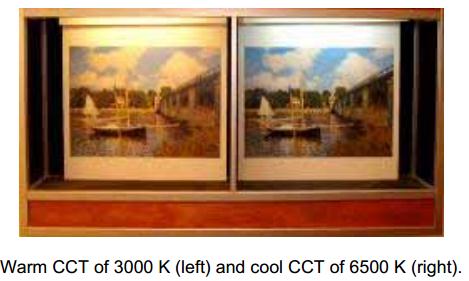
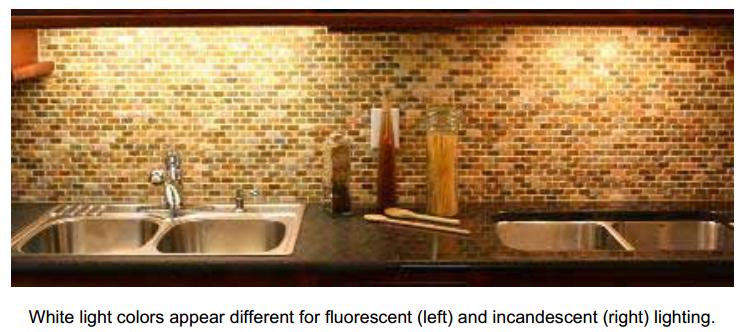
Brightness and Glare
Under-cabinet lighting should not be glaring to anyone, especially someone in a seated position elsewhere in the room. Fixtures mounted under the cabinets should be well shielded; if the cabinet does not provide enough of a recess to conceal the fixture, a piece of trim molding approximately 1 in. wide should be added to the bottom of the cabinet. Installation toward the front of the cabinet or shelf with the light source facing the back is generally recommended. This produces the most even light distribution on both the countertop and the backsplash. This location is also useful in reducing the potential for direct view of the light source, typically resulting in the least glare.
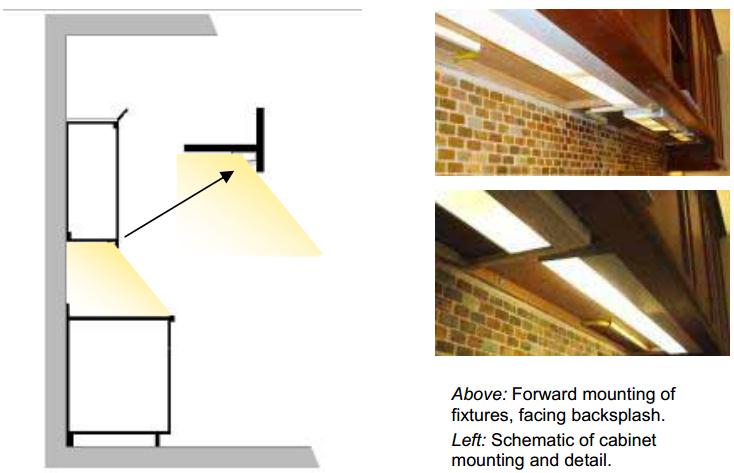
Dimming Capability
The ability to control the brightness of the under-cabinet lighting adds greatly to its value. The tasks being carried out and their difficulty will dictate the light level required. People of different ages with different visual needs performing various tasks will use this space, so flexibility could offer benefits. Incandescent and LED lighting can be dimmed easily, but having this feature may add to the fixture cost. Dimming fluorescent lighting is costlier than dimming incandescent lighting because of the type of dimming components required.
Fixture Fit
For linear under-cabinet lighting, matching the length of the fixture as closely as possible to the size of the cabinet or shelf will result in the best uniformity and minimize dark spots and shadows between the fixtures. Being able to connect fixtures as close together as possible between cabinets, whether by routing through the cabinet stiles to enable snapping fixtures together, or by using interconnect cords as unobtrusively as possible, will also result in fewer shadows.
Fixture Lenses
Lenses help diffuse the light provided by the fixture and produce a more uniform appearance on the counter. In the case of halogen or xenon fixtures especially, a lens will help minimize reflections on the countertop. Lenses will also reduce the light intensity to a degree. Lenses can reduce the multiple shadows cast by fixtures with many light sources, especially ones with high-power LEDs.

 RESOURCE
RESOURCE





